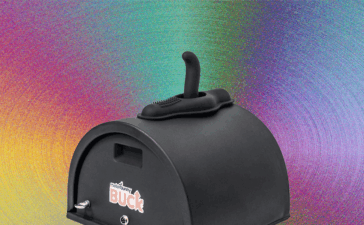IVR (Interactive Voice Response) phone surveys are a popular and useful way for businesses and organizations to gather relevant data and gain new insights into their audiences. However, callers don’t exactly line up down the block to complete them.
Most callers are trying to get off an IVR system as fast as they can. They want to pay a bill, check an account balance, and what not — and then they want to get on with the rest of their life.
That said, a decent number of callers is typically willing to hang around and complete a survey. Even those gracious souls will give up and ditch the survey, usually for one of the following reasons:
- It provides too many answers to choose from.
- There’s only one way to submit answers.
- The survey doesn’t respect the customer’s time.
- There’s a lack of relevancy.
- It asks the same old questions.
- The surveyor fails to follow up.
In this post, I’ll go through all six reasons callers abandon surveys and discuss the remedies in detail. But first, we need to answer an important question.
Should you even bother with IVR surveys?
It might seem like a lot of work with little payoff, especially if the survey response rate is frustratingly low. But IVR surveys are one of the easiest and most effective ways to measure customer service satisfaction.
The answer is yes. One hundred percent.
Setting up an IVR survey is generally pretty quick and easy to do, especially with best business phone services or call center software. Most of the leading solutions offer IVR surveys as a built-in feature or available as an add-on with seamless integration. This will provide incredibly valuable data for your organization and improve engagement with your brand. Let’s walk through the main benefits.
Gather insights about your customers
First and foremost, IVR surveys are a great way to gather constructive criticism in the form of customer feedback. Over time, survey results will provide benchmarks for measuring customer service satisfaction and tracking performance.
You will also pick up a host of other insights about who your customers are, what they care about, and how their tastes are changing. Paired with IVR analytics, IVR survey data can help you surface new trends and make data-driven improvements to customer experience.
Increase customer engagement
An IVR survey actively involves customers and it demonstrates your company’s commitment to understanding and addressing their experiences. It’s a powerful signal that their opinions matter.
You can also pair surveys with promotions to foster loyalty and enhance customer engagement. For example, after a customer completes an IVR survey, you might ask if they’d be interested in receiving a discount on a service upgrade based on their feedback. This type of engagement not only encourages immediate action but also builds longer-term customer relationships, improving both conversion rates and overall customer retention.
Implement low-cost QA
IVR surveys are reasonably affordable to implement. Yes, it costs time and money to transcribe, code, and analyze survey answer data, but the overall benefits can easily outweigh the costs for most businesses and organizations. Surveys are one of the most critical parts of quality assurance, and you may want to use additional channels beyond IVR (like email or SMS) to gather additional survey data.
SEE: Learn other call center quality assurance best practices.
Drive survey completion
Compared with many other types of surveys, IVR surveys are not as complicated or as taxing on the customers. With just a few questions on a call that was already taking place, you can collect quality data regarding your customer service practices with minimal technical issues.
The top six reasons callers abandon an IVR survey
Many companies conduct IVR surveys that are designed poorly enough to become an inconvenience to callers on the other end of the line. Here are six big things that they might be doing wrong, which ultimately send callers running for the hills.
1. Providing too many answer options
Survey respondents can feel overwhelmed when there are too many answers to choose from, which often causes them to leave or give answers they don’t really mean. This is already a bad practice due to either of those results as it is, but it can also make it harder to collect and evaluate your data effectively — both if there are too many answers for your data to be meaningful and if there are a ton of unreliable answers.
For example, rating your customer service on a scale of 1-10 is already a bit too specific to be useful (because what’s the practical difference between, say, 3 and 4?), but it becomes even less useful if you can’t tell which answers were serious and which ones were not.
2. Offering only one way to provide answers
When giving options to provide answers, always offer both touch-tone and voice options. Some customers may not feel comfortable or know how to do just one, leading to a higher abandonment rate.
It’s also a good idea to allow customers to leave an open-ended response for whatever feedback they decide to give.
3. Not respecting the customer’s time
Asking too many questions and not being upfront about the number of questions and topics your survey has — or the estimated time it’ll take to complete — can frustrate respondents and send a message that you don’t respect their time. This, in turn, will lead to lower response rates in many cases.
4. Lack of relevancy
When designing your survey, make sure the questions you ask are relevant to the IVR customer experience and/or their experience with your customer service. Asking off-topic questions, such as if the respondent is aware of an upcoming sale or the last time they visited your website, can be very off-putting and harm your brand and customer service reputation.
5. Not alerting callers to a post-call survey
You don’t want to make callers feel as if they’re being ambushed by a survey, or pressured into doing something they didn’t anticipate. This can damage your brand’s reputation and cause many of your customers to avoid contacting your call center for the information they need in the future, ultimately lowering customer engagement and satisfaction.
Work a simple survey notification into the beginning of your IVR call flow so that people know what to expect.
SEE: Learn how to set up an effective call flow to maximize containment rate.
6. Failing to follow up
In many cases, customers who give their honest feedback about a negative customer experience with an IVR system never receive a follow-up or acknowledgment from the business or organization. This creates a negative perception that their opinions and experiences don’t matter to you, decreasing their likelihood of participating in future surveys.
Tips to increase IVR survey completion
To increase survey completion rates, make your IVR survey easy, relevant, and engaging. Here’s how:
- Introduce the survey topic: Inform callers beforehand about the survey and its topics. This reduces uncertainty and abandonment.
- Keep the topic relevant: Ensure the survey focuses on the call’s subject. This helps gather useful data and improve the customer experience.
- Upgrade your call center software: Use advanced platforms like RingCentral or Nextiva for easier survey design, implementation, and data analysis.
- Keep it simple and concise: Limit the number of questions and answer choices. This shows respect for the caller’s time and improves data quality.
- Have clear goals: Identify your survey objectives, such as improving IVR or agent performance. This helps you create a focused, actionable survey.
- Know your audience: Tailor the survey for different customer segments, like frequent callers or those with specific needs, to boost response rates.
- Test your survey: Run tests to identify issues and refine the survey before launching it to customers. This ensures a smooth and effective experience.
By following these strategies, you’ll enhance survey participation and gather valuable feedback.
What to do before you deploy an IVR survey
Before launching your IVR survey, it’s crucial to follow a structured approach to ensure smooth operation and meaningful results.
Ensure that the survey is brief and focused. Streamlining questions and answer choices improves the user experience and increases response rates. Get to the point quickly, so respondents don’t lose interest or feel overwhelmed.
On the technical side, make sure that respondents are only asked to take the survey once they’ve received the assistance they need, whether through self-service options or a live agent. This avoids turning your survey into a frustrating roadblock.
Conduct a soft launch with a small test group to identify any technical issues, refine the customer journey, and ensure the survey functions as expected. During this phase, focus on being transparent with your callers by clearly informing them of the number of questions and the time commitment involved. Make sure your survey questions are neutral and avoid leading phrases like “should,” “could,” or “would.”
Finally, be open to adjustments. If response rates are low or feedback indicates issues, make changes to the survey design — whether it’s the number of questions, the phrasing, or the answer options — to optimize engagement and gather more relevant data.
Now you are ready to collect data, improve customer service, and offer a better experience to customers moving forward. Surveys are just one facet of call center IVR worth improving, and IVR is just one of many call center software features that helps businesses grow their customer base. Never stop optimizing.





